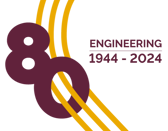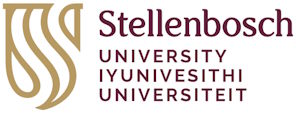
[Article by Onthatile Mahlangu, SMF News – read the online version here.]
Seven students from the Faculty of Engineering at Stellenbosch University (SU) have been chosen to represent South Africa in an international space engineering competition.
Dr Arno Barnard, senior lecturer in the Department of Electrical and Electronic Engineering at SU and supervisor of the students’ satellite project, Stellenbosch Lunar Interferometric Network for Quasi-static Imaging (SLINQI), confirmed that Nortier Geyer and Jandré Frey will present the SLINQI concept at the Mission Idea Contest (MIC) in Tokyo, Japan.
“SLINQI is a satellite mission idea that we took on as a side project,” said Geyer, an MEng (Electronic Engineering) student at SU and the team’s spokesperson, in correspondence with SMF News.
Although it is only an idea developed for the competition, it is “designed for real-world application”, according to Geyer.
The SLINQI satellite is envisioned as a shoebox-sized model that could travel to “the far side of the moon, free from Earth’s noise, [where] it would work together with [another] identical SLINQI satellite to create detailed ‘snapshots’ of space, using radio waves instead of light”, explained Geyer.
“This [would let] us detect cosmic signals that can’t be picked up from Earth,” said Geyer. “This [would help] us explore parts of the universe we’ve never been able to study clearly before.”
‘A new facet of space exploration’
The competition allows students to benchmark their skills against top students from other countries, exchange ideas, and bring back knowledge that can inspire innovation in South Africa, according to Barnard.
“It also shows the world that South Africa is a serious player in the global space and engineering community,” said Barnard.
“The primary goal of MIC is to open the door to a new facet of space exploration and exploitation,” said Rei Kawashima, committee chair for international relations for the MIC, in correspondence with SMF News.
The MIC was established in 2010 to provide aerospace engineers, college students, consultants, and anybody interested in space with opportunities to present their creative ideas and gain international attention, according to Kawashima.
Teams are judged on originality, societal impact, scientific value, engineering solutions, operational planning, and the feasibility of their project in terms of cost, schedule, and infrastructure, said Kawashima.
According to Barnard, they are a motivated, multidisciplinary team skilled in aerospace systems, robotics, electronics, and problem-solving. He also said that creating the project outside the team’s main research field of electronic engineering shows their dedication and passion.
The team hopes to learn how other countries approach space innovation, from mission design to collaboration strategy, said Barnard.
They want to return with new ideas and inspiration to share with South African students, so that the students can see themselves contributing to global space exploration one day, he said.
Photograph: A team of MEng (Electronic Engineering) students from Stellenbosch University (SU) present a diagram of their satellite concept for the Mission Idea Contest: to the Moon. The team members are Nortier Geyer, Petrus Marais, Russouw Grobbelaar, Danie Gouws, Michael Esterhuyse, Sazi Nkosi and Jandré Frey.
[Credit: Onthatile Mahlangu]



